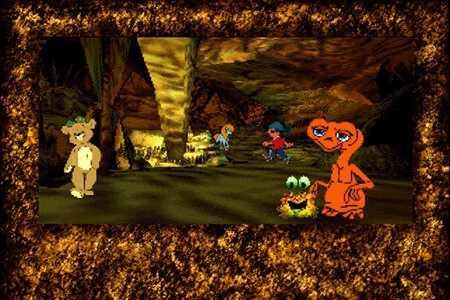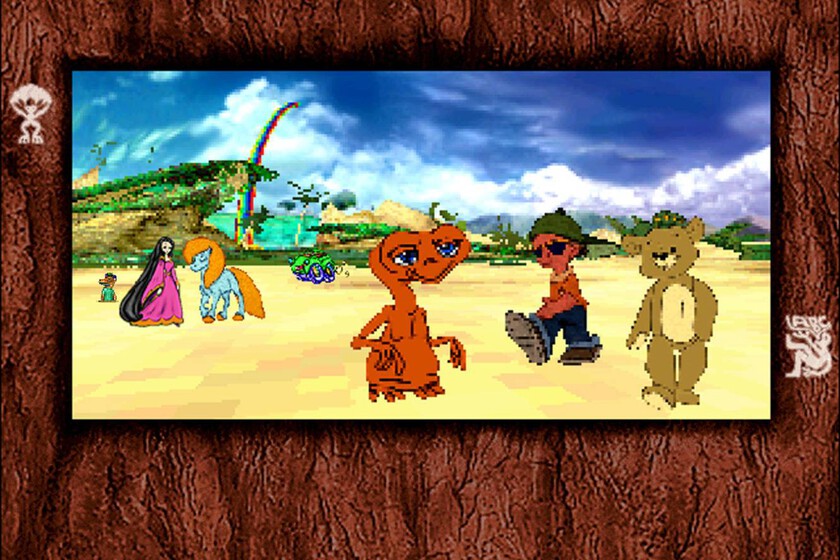No one likes to spend time in a hospital, be it a little or a lot, when you can be calmly at home. Unfortunately, there are injuries or illnesses so serious that they force people to spend a long time in these places, but luckily there have always been people in charge of making those days, weeks or months more enjoyable for patients.
That was precisely the goal that Worlds Inc. and the Starbright Foundation tried to achieve in the 1990s, which led them to create a project called Starbright Worldwhich was tried a 3D virtual world in which all children could interact who were admitted to different hospitals in the United States. But something that was very curious is that even Steven Spielberg himself was involved in all this.
A pioneering MMO and an excellent idea to help the little ones
To put you in situation, the idea of Starbright World It was born in 1993 and it was the Starbright Foundation, a charitable organization led by the director of films like ET, Jurassic Park or Indiana Jones, which planned everything. David Marvit, executive producer of Worlds. Inc, was the one who met with Spielberg himself to carry out this project.
The purpose was to generate a kind of 3D MMO in which children with chronic illnesses could come together through a kind of social network to play together, talk about their situation or whatever they wanted, whether it was through a text chat, by call or even by video call. A good way to keep them entertained in a fun way and by the way sharing experiences with other children in the same situation.
As Marvit himself points out, for the idea of the initial concept he had to meet with doctors and child psychologists to gather enough information on how to correctly carry out everything he had thought of. From there he was gathering the entire team that was going to lend him a hand with this idea in which Steven Spierlberg participated very closely.
Above all, he wanted to do something like this for the reason that sick children depend on technology and machines to survive by not being able to leave hospitals. For this reason, he decided use fantasy and video games so that children could escape from reality and thus feel freer in a world that they could consider as their own. For this, colorful scenarios were designed in which there were cute animals, magical portals and many other places to explore.

In addition, the children had the ability to design your own environments thanks to the use of blocks and other basic elements in order to feel that they had their own home in this fantasy world, regardless of the place from which each one was connected. In this way, physical limits were transcended to reach a larger audience and thus give children a greater sense of freedom.

On the other hand, serious illnesses can cause physical and mental changes in those affected. That is why another of the purposes of Starbright World was to allow the creation of characters in the form of avatarso that each one could interpret roles or create their own identity to forget about their illnesses or problems in this virtual world, even if it was for a while.
What’s more, in this video that was recorded 28 years ago in the form of a presentation and demonstration, you can better see how exactly it works. In some moments there are even scenes of hospitalized children playing and flashing a smile from ear to earso it is clear that the idea was brilliant and in principle it was very well accepted.
In the end everyone behind Starbright World I wanted to turn it into a place where children could feel like who they are, without losing their innocence while building areas, putting on costumes, acting out roles or carrying out a variety of activities, but above all offering everyone the same possibilities so that they They will get together and spend very entertaining moments in the cold hospitals.
The technical problems that condemned him to reinvent himself

Naturally, we must not forget that we are talking about a project that began its journey 30 years ago, which means that the technology that existed at that time has absolutely nothing to do with what we know today. Therefore, even though the idea was good, there was no shortage of media criticizing the proposalas a journalist from the New York Times did, accusing him of being slow, clumsy and lacking in sufficient activity.
What’s more, the players themselves found themselves at times with technical problems that, unfortunately, were more frequent than their creators would have wanted. That does not mean that performance improved over time between 1995 and 1997, the years in which it remained open. There were only two, but those responsible they were very concerned about stability and performance that this fantasy world offered.

Another great reason for its closure was due to the fact that the Starbright Foundation wanted to take the idea even further so that it would not remain a simple concept of a game area and thus create a true online community. The problem is that at that time it was not so easy for households to have an Internet connection, as well as the necessary means to access this world, whether from a hospital or from their own home.
Therefore, in 1997 it was closed definitively, although that does not mean that it was the end, because a year later, in July 1998, Starbright World was reborn as a real social network with forums, chat rooms, places to make video calls, mini-games and much more. Initially, it was only available again in hospitals thanks to a private network, but it didn’t take long for dozens of American hospitals to join in over time, until in the year 2000 there were more than 80 that made use of this social network.

Over time, the opportunity was enabled so that children could also connect from their homes and that clinical trials were produced in order to really verify the scope and effect of this social network. For example, one of them concluded that children experienced lower pain intensity and pain aversion after spending time in this way, but did not achieve really significant results.
Unfortunately, not everything lasts forever, so after a while the social network closed its doors and today it is not operational. Even so, we currently have others such as Instagram, Facebook or Twitter, but we must not forget the great work of solidarity foundations such as Juegaterapia to deliver consoles and video games to children with cancer so that their stay in hospitals is more fun.

